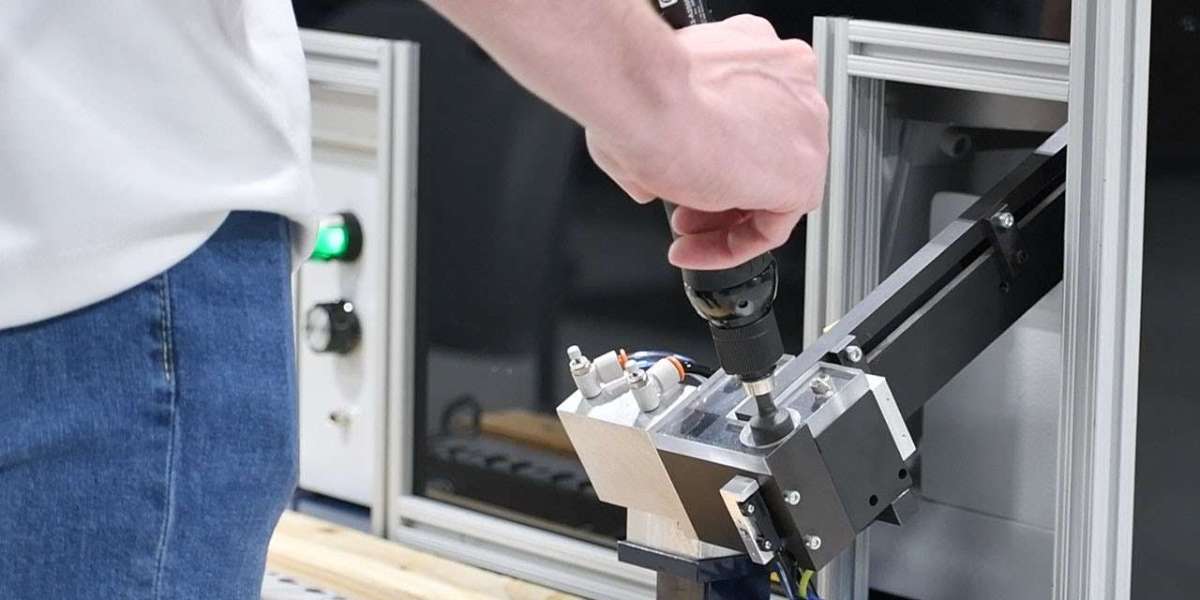Understanding Screw Presenters:
Before delving into the selection process, it's essential to understand what screw presenters are and how they work. Screw presenters are automated devices designed to streamline the process of supplying screws to assembly operators. They feature a hopper or feeder mechanism that stores and dispenses screws, as well as an orientation system that aligns the screws for easy pickup by the operator. Screw presenters are available in various configurations, including vibratory feeders, pneumatic feeders, and rotary feeders, each suited to different types of screws and assembly requirements.
Factors to Consider When Choosing a Screw Presenter:
Screw Type and Size:
One of the primary considerations when selecting a screw presenter is the type and size of screws used in your assembly process. Different screw presenters are designed to handle specific screw types, such as machine screws, self-tapping screws, or specialty screws. Additionally, consider the size range of screws supported by the presenter to ensure compatibility with your assembly requirements.
Production Volume:
The production volume of your assembly operation will influence the type of screw presenter you choose. For high-volume production environments, you may require a screw presenter with a larger hopper capacity and faster dispensing speed to keep up with demand. Conversely, for low-volume or prototype assembly, a smaller and more flexible screw presenter may suffice.
Automation Integration:
Consider how the screw presenter will integrate with existing automation systems or assembly equipment in your facility. Some screw presenters are designed to seamlessly integrate with robotic arms, pick-and-place machines, or assembly stations, allowing for fully automated screw feeding and assembly processes. Ensure compatibility with your existing equipment to maximize efficiency and productivity.
Feeding Mechanism:
Screw presenters utilize different feeding mechanisms to dispense screws to operators, including vibratory bowls, pneumatic tubes, and rotary feeders. Evaluate the advantages and limitations of each feeding mechanism in terms of speed, accuracy, and compatibility with your screw type and size requirements. Choose a feeding mechanism that best suits your assembly process and operational needs.
Orientation and Alignment:
The orientation and alignment of screws are crucial for efficient assembly operations. Look for screw presenters with reliable orientation systems that ensure screws are presented to operators in the correct orientation for easy pickup and insertion. Consider features such as adjustable rails, magnetic tracks, or optical sensors to enhance screw alignment and reduce assembly errors.
Versatility and Flexibility:
Opt for a screw presenter that offers versatility and flexibility to accommodate different screw types, sizes, and assembly configurations. Look for adjustable settings or interchangeable components that allow you to easily switch between screw specifications and adapt to changing assembly requirements without the need for extensive reconfiguration or downtime.
Ease of Setup and Operation:
Choose a screw presenter that is easy to set up, operate, and maintain to minimize downtime and maximize productivity. Look for intuitive controls, clear user interfaces, and ergonomic design features that facilitate quick and efficient operation by assembly operators. Additionally, consider the availability of training and technical support to ensure smooth implementation and ongoing support for your screw presenter.
Reliability and Durability:
Select a screw presenter from a reputable manufacturer known for producing high-quality, reliable, and durable equipment. Consider factors such as construction materials, build quality, and warranty coverage to ensure long-term reliability and minimal maintenance requirements. Choose a screw presenter that can withstand the rigors of continuous operation in demanding manufacturing environments.
Final Thoughts:
In conclusion, choosing the right screw presenter is essential for optimizing efficiency, accuracy, and productivity in assembly operations. Consider factors such as screw type and size, production volume, automation integration, feeding mechanism, orientation and alignment, versatility and flexibility, ease of setup and operation, and reliability and durability when selecting a screw presenter for your specific application. By carefully evaluating these factors and choosing a screw presenter that meets your operational requirements, you can streamline your assembly processes, reduce labor costs, minimize errors, and maximize overall efficiency and productivity.







